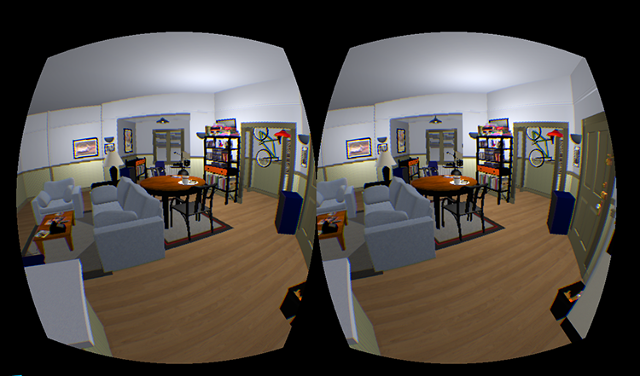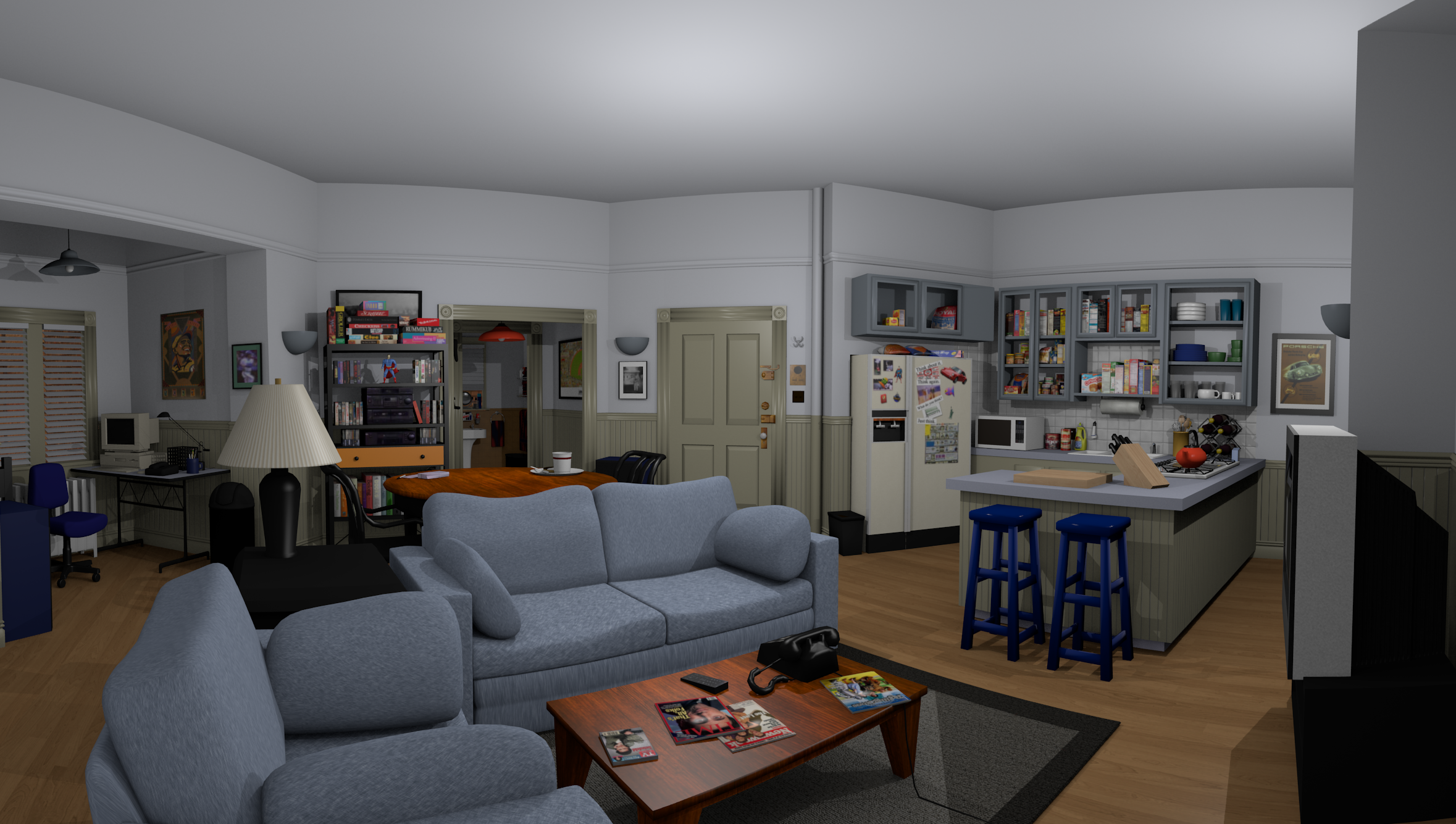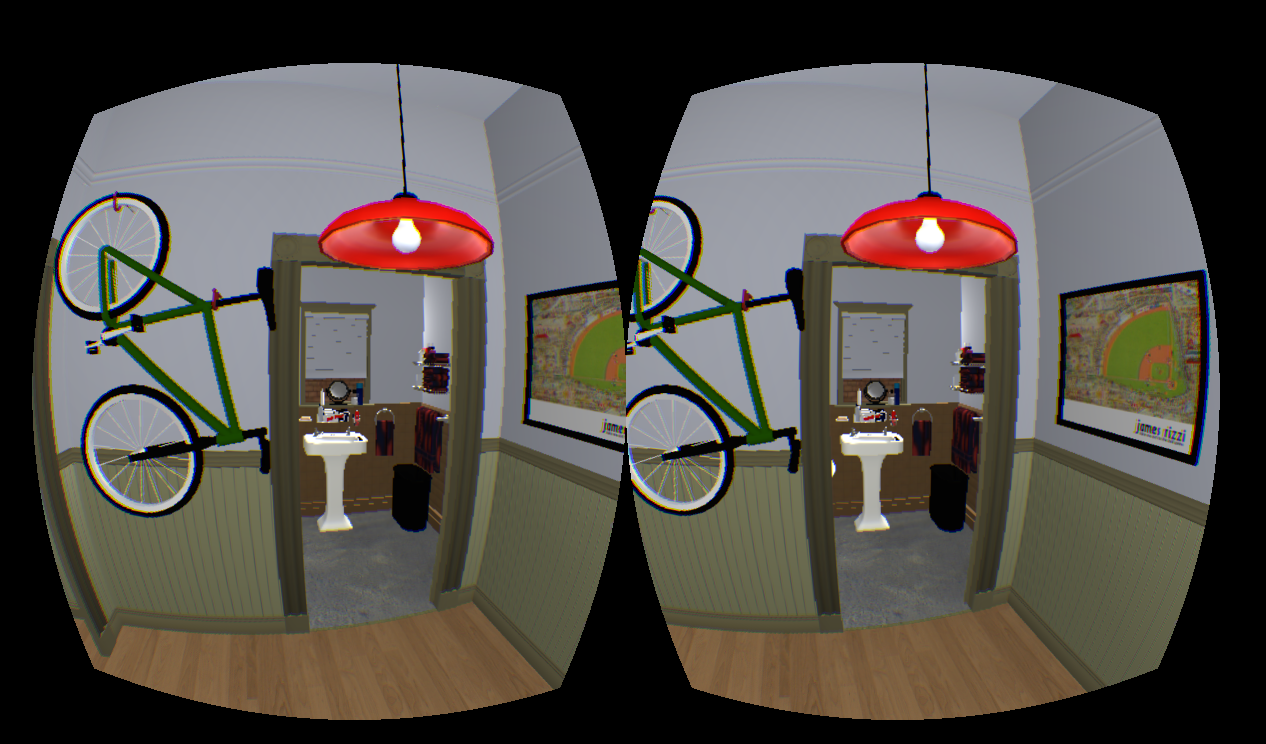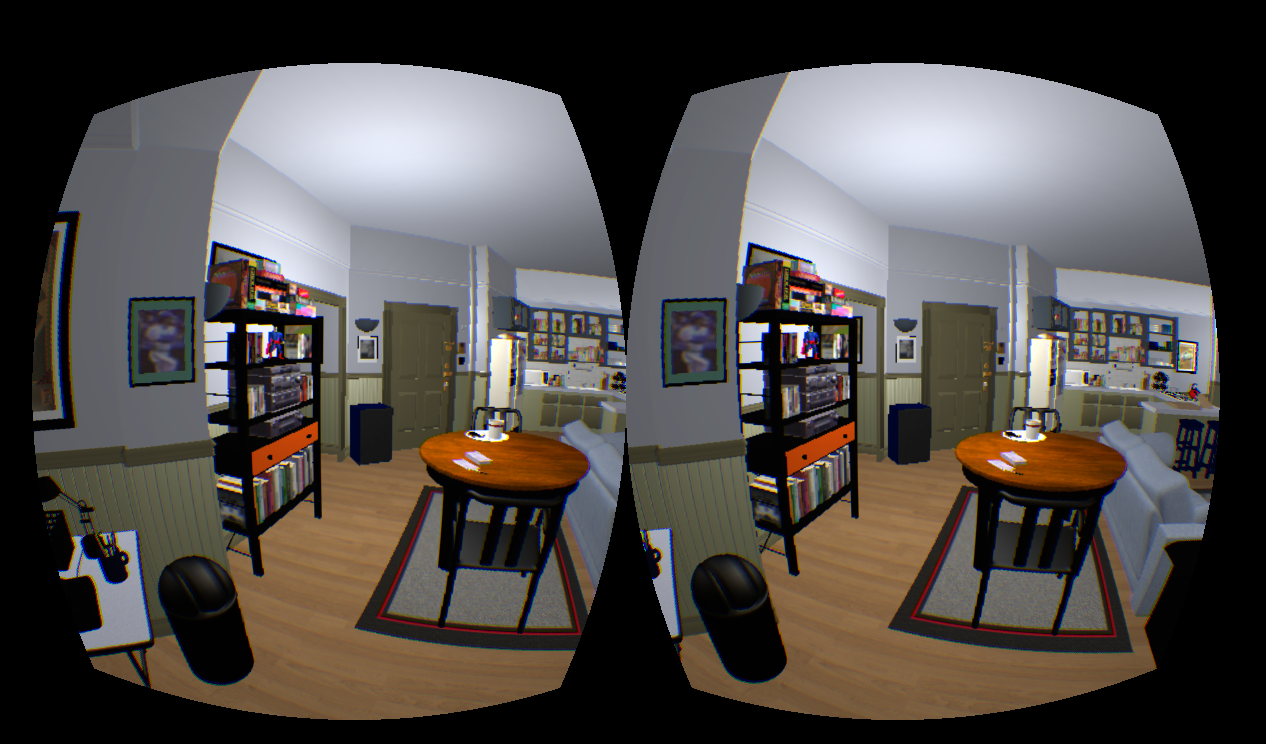After two months of taking screen captures and coding, Web designer Greg Miller has re-created a place intimately familiar to many Americans: Jerry Seinfeld's sitcom apartment.
With the use of the virtual reality headset Oculus Rift, fans of the show can now explore a virtual 3D model of the iconic New York residence.
Users can walk around Seinfeld's apartment, explore all the rooms, and are free to find all 11 episode-specific references that Miller put into his virtual re-creation.
To start, Miller sketched out the entire apartment in a 3D model, he told Fast Company. Then, over two months, he watched Seinfeld and examined screencaps to figure out the minute details of the apartment. He even found 1990s-era labels for Jerry's cereal collection.
Don't own an Oculus Rift? You can still explore the apartment here. "Jerry's Place" is Miller's tribute to fellow Seinfeld fans.
Oculus Rift was designed by Palmer Luckey as a reasonably affordable ($499) device for gaming, but startups like PocketCake are using the technology to bring virtual reality simulations to the architecture and real estate markets.
Luckey told Fast Company that he believes that the future of gaming lies in virtual reality, and thus his headset was created as a way for users to feel as if they are inside the game they're playing. It uses sensors to follow the movement of your head as you look around, cretaing an immersive gaming experience. But it works for exploring your favorite television character's home, too.
Here are screen captures of views of Jerry's Place through the Oculus Rift headset:
Watch this VR model progress video from Greg Miller:
Related Stories
Curtain Wall | Aug 15, 2024
7 steps to investigating curtain wall leaks
It is common for significant curtain wall leakage to involve multiple variables. Therefore, a comprehensive multi-faceted investigation is required to determine the origin of leakage, according to building enclosure consultants Richard Aeck and John A. Rudisill with Rimkus.
MFPRO+ News | Aug 14, 2024
Report outlines how Atlanta can collaborate with private sector to spur more housing construction
A report by an Urban Land Institute’s Advisory Services panel, commissioned by the city’s housing authority, Atlanta Housing (AH), offered ways the city could collaborate with developers to spur more housing construction.
Adaptive Reuse | Aug 14, 2024
KPF unveils design for repositioning of Norman Foster’s 8 Canada Square tower in London
8 Canada Square, a Norman Foster-designed office building that’s currently the global headquarters of HSBC Holdings, will have large sections of its façade removed to create landscaped terraces. The project, designed by KPF, will be the world’s largest transformation of an office tower into a sustainable mixed-use building.
Sustainability | Aug 14, 2024
World’s first TRUE Zero Waste for Construction-certified public project delivered in Calif.
The Contra Costa County Administration Building in Martinez, Calif., is the world’s first public project to achieve the zero-waste-focused TRUE Gold certification for construction. The TRUE Certification for Construction program, administered by Green Business Certification Inc. (GBCI), recognizes projects that achieve exceptional levels of waste reduction, reuse, and recycling.
Modular Building | Aug 13, 2024
Strategies for attainable housing design with modular construction
Urban, market-rate housing that lower-income workers can actually afford is one of our country’s biggest needs. For multifamily designers, this challenge presents several opportunities for creating housing that workers can afford on their salaries.
University Buildings | Aug 12, 2024
Planning for growing computer science programs
Driven by emerging AI developments and digital transformation in the business world, university computer science programs are projected to grow by nearly 15% by 2030.
Energy Efficiency | Aug 9, 2024
Artificial intelligence could help reduce energy consumption by as much as 40% by 2050
Artificial intelligence could help U.S. buildings to significantly reduce energy consumption and carbon emissions, according to a paper by researchers at the Lawrence Berkeley National Laboratory.
Sponsored | Healthcare Facilities | Aug 8, 2024
U.S. healthcare building sector trends and innovations for 2024-2025
As new medicines, treatment regimens, and clinical protocols radically alter the medical world, facilities and building environments in which they take form are similarly evolving rapidly. Innovations and trends related to products, materials, assemblies, and building systems for the U.S. healthcare building sector have opened new avenues for better care delivery. Discussions with leading healthcare architecture, engineering, and construction (AEC) firms and owners-operators offer insights into some of the most promising directions. This course is worth 1.0 AIA/HSW learning unit.
Office Buildings | Aug 8, 2024
6 design trends for the legal workplace
Law firms differ from many professional organizations in their need for private offices to meet confidentiality with clients and write and review legal documents in quiet, focused environments
Data Centers | Aug 8, 2024
Global edge data center market to cross $300 billion by 2026, says JLL
Technological megatrends, including IoT and generative AI, will require computing power to be closer to data generation and consumption, fueling growth of edge IT infrastructure, according to a new JLL report.




















